
8D ASSOCIATION
The 8D Association is dedicated to promoting the history of the railways of South Lancashire, Merseyside and North Cheshire.
The Folly Lane Branch – Runcorn

Reproduced with permission from the Industrial Railway Society.
The Folly Lane branch was opened in 1868 by the London & North Western Railway (LNWR). It connected the Runcorn Docks to the LNWR Ditton Junction and Weaver Junction line which provided a short cut for trains travelling between London and Liverpool by bridging the River Mersey at Runcorn. Prior to the line opening trains had to travel via Warrington.
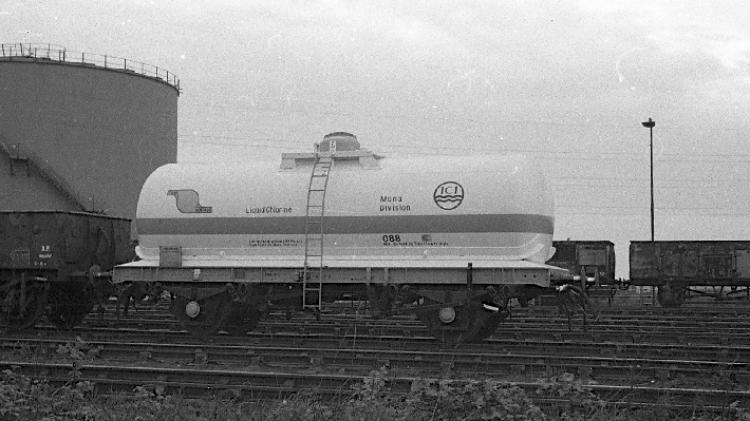
Runcorn Docks can trace their origin back to 1776 when the Bridgewater Canal opened at Runcorn. Runcorn was the western terminus of the canal which had a direct connection to the River Mersey via a set of locks at the town which allowed for the onward movement of goods to Liverpool. A dock system developed at the point where the river and the canal had their juncture. Early railway developments bypassed Runcorn but when the Ditton Junction and Weaver Junction line was proposed the opportunity was taken to also obtain an act to build a branch to the Runcorn docks.
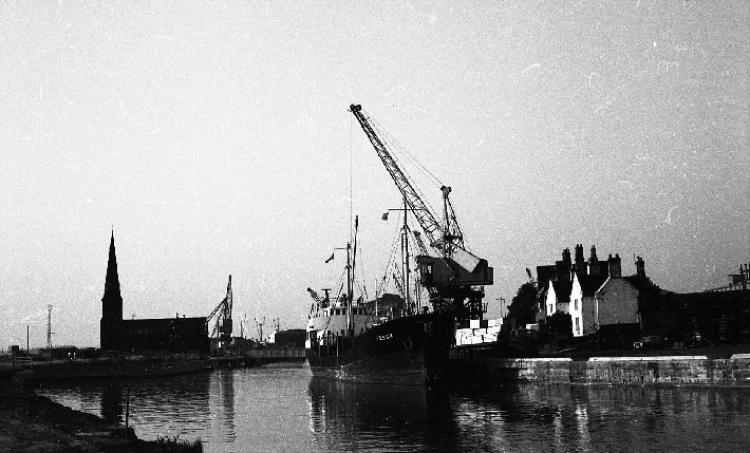
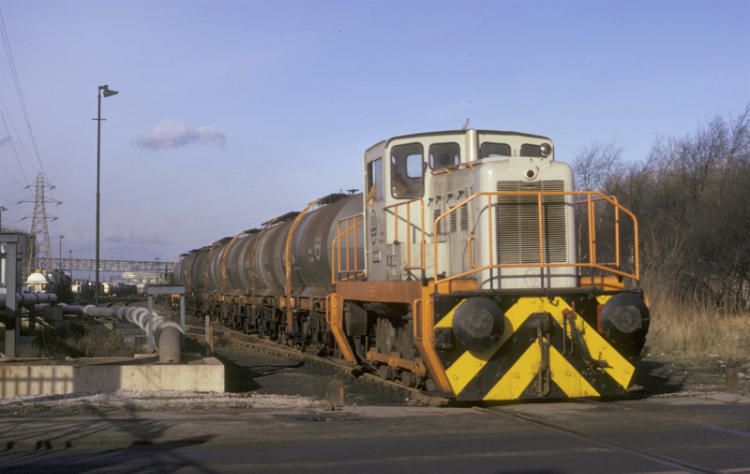
A Yorkshire Engine Co “Janus” class locomotive No 2718 ‘Eskdale’ (built in 1958) about to cross Sandy Lane crossing with a rake of empty caustic soda 4 wheel tanks heading to ICI’s Castner Kellner Works. 22nd January 1973.
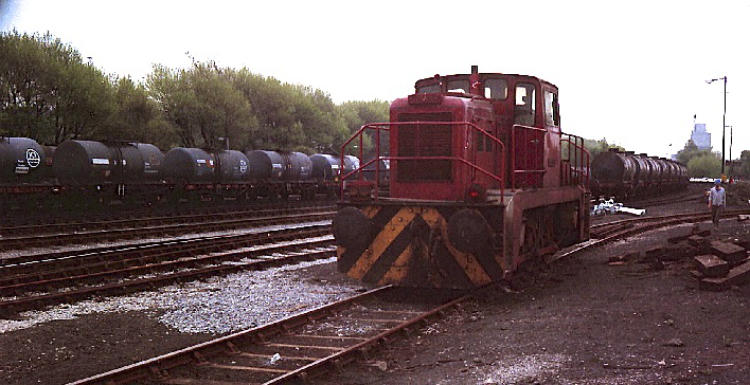
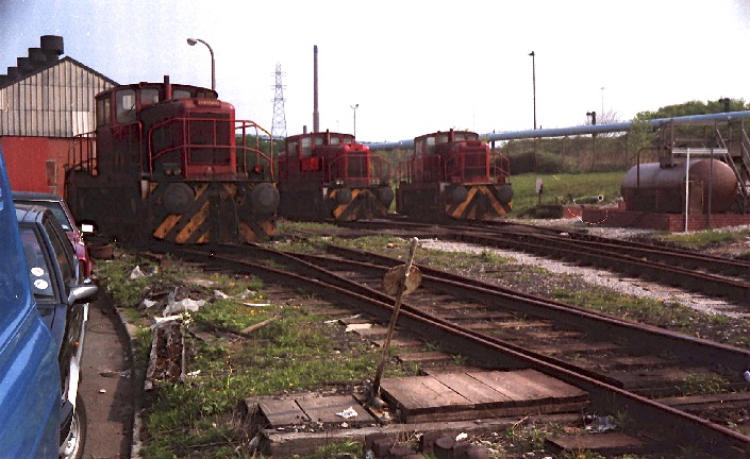
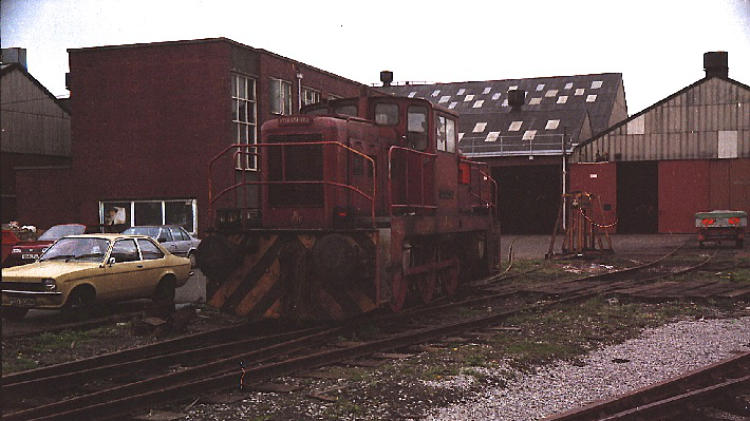
The Castner-Kellner Alkali Company opened a factory at the end of the branch at Weston Point in 1897 which was served by its own sidings. The company was absorbed by Brunner Mond in 1920 before the amalgamation of several chemical companies formed Imperial Chemical Industries in 1926. Salt Union at Weston Point also became part of ICI in 1940.
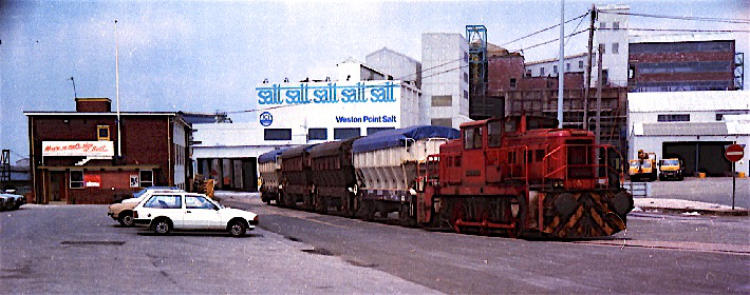
Over the years the Brunner Mond works expanded and in 1922 the company opened its own railway which was known as the Weston Point Light Railway. It connected directly to the Folly Lane branch. Brunner Mond (and later ICI) had their own locomotives for the system with dedicated engine shed and repair facilties for both engines and wagons. Steam locos eventually gave way to diesel shunters in 1960 with ICI puchasing several Yorkshire Engine company 0-6-0 shunters. The company operated an extensive tank wagon fleet and had around 300 twin axle wagons allocated to Folly Lane. In the late 1980’s ICI decided to withdraw its own fleet of shunters, the final one to be withdrawn was donated to the Llangollen railway for use on infrastructure trains. B.R. assumed responsibility for shunting movements within the sidings and a Class 08 could often be seen at rest by the train crew cabin.

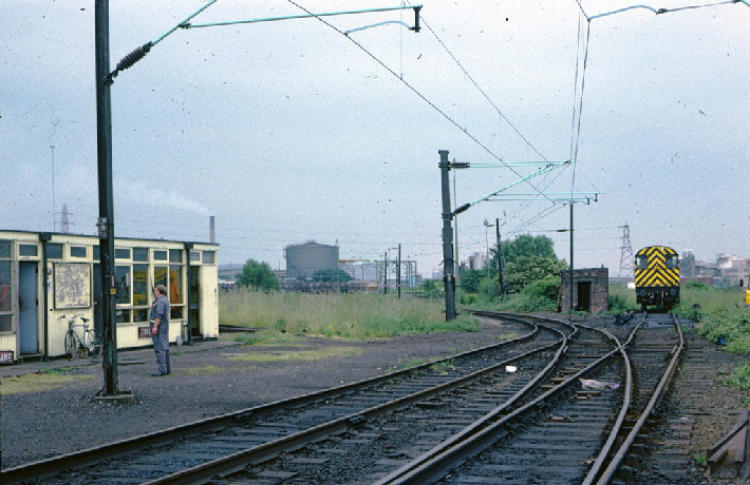
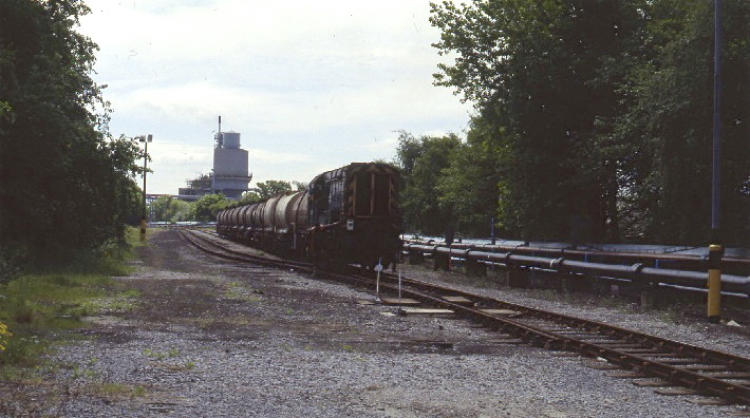
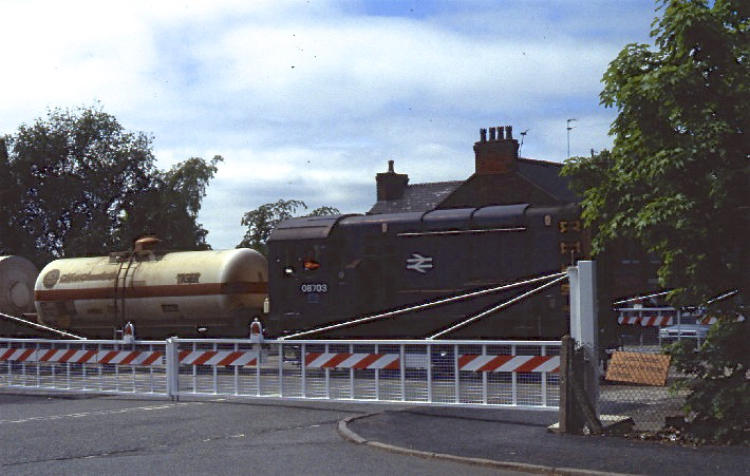
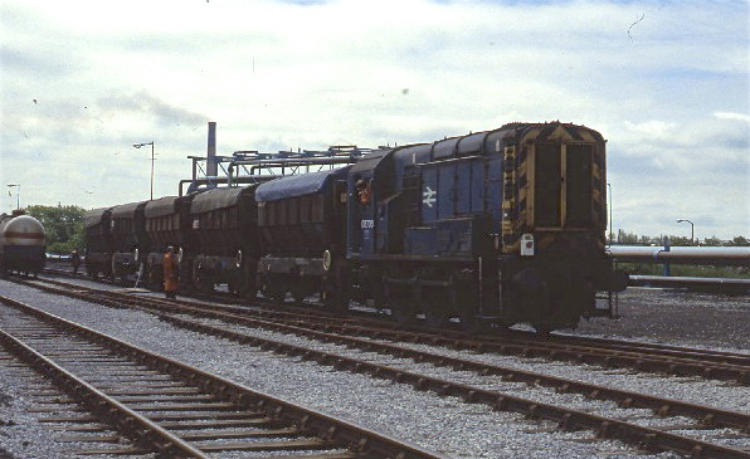
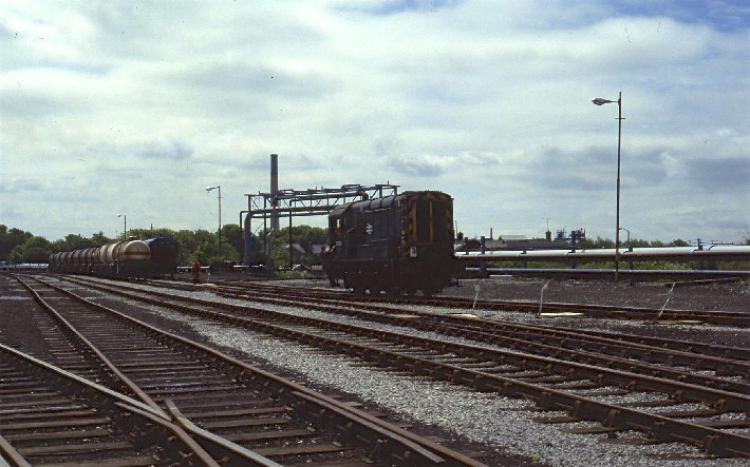
During the 1960’s the company expanded their road haulage fleet and their railbourne operation contracted as a result. At this time in conjunction with the electrification of the Weaver Junction to Liverpool section of the West Coast Main Line the branch from Runcorn station to the exchange sidings was electrified. Block trains mostly became the norm and even in the 1980’s there was around 20 block trains per week despatched. The Speedlink network also played a part taking many smaller consignments which included the despatch of 60 to 70 wagons of Caustic Soda each week and smaller flows of Chloro Fluoro Carbons (refrigerant gasses), chlorine, salt and other chemicals and solvents. Incoming flows to the plants included heavy oil and methanol which were brought in by block load. ICI not only supplied its own customers via rail but its other U.K. plants as well.
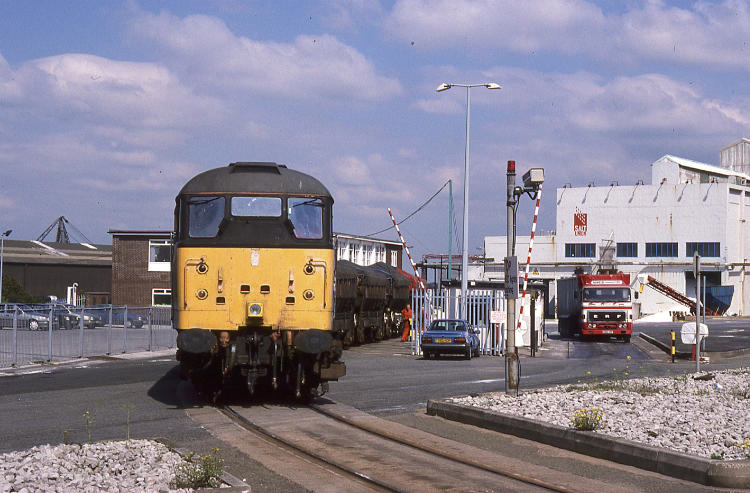
With the demand for heavy chemicals in decline it was the traffic from ICI Salt which increased in the 1970’s with a twice weekly flow to BP Chemicals chlorine plant at Baglan Bay, traffic which was shared with British Salt at Middlewich. This traffic ended with the closure of the Baglan Bay plant in 1983. A new salt flow started almost immediately to Roche Pharmaceuticals at Dalry Strathclyde. This too was shared with British Salt and was initially operated via the Speedlink Network with around 10 hoppers despatched weekly. By the end of the 1980’s the traffic flows had virtually ceased from Folly Lane and the end of the Speedlink network in 1991 meant most traffic was now being despatched by road. The only traffic to survive was the Roche salt flow with the portion from Folly Lane tripped to Arpley on a Monday to meet up with the portion from Middlewich which was then being delivered by the Enterprise network. This flow ceased in January 1999 and there was then only a sporadic DRS flow to and from the sidings.
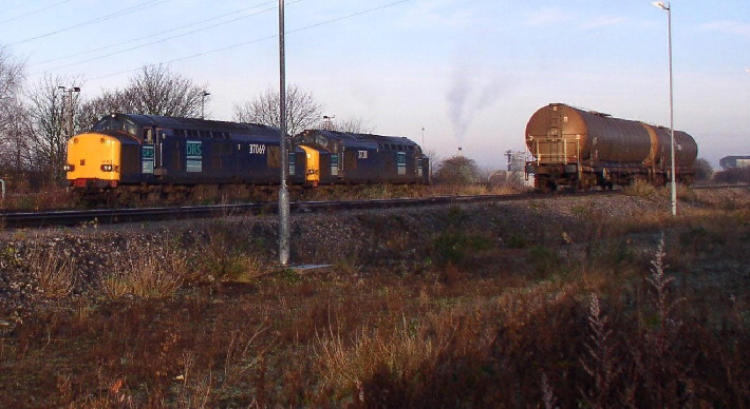
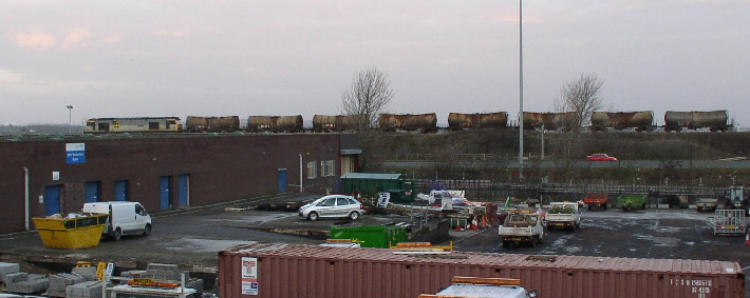

At this time the future was looking bleak for rail traffic until the new owners of ICI heavy chemicals, Ineos Chlor, installed a new Caustic Soda loading gantry and a container lift at Picow Farm Road. With three trains per week operating from it the future for the branch looked a little brighter. The construction of a new power station on the site of the former ICI Weston Workshops which is designed to produce electricity by burning household waste is expected to generate three trainloads per week initially. With the construction of the new power station there has also been improvements made to the permenent way with new track and points laid and a large unloading crane for the containers of household refuse.

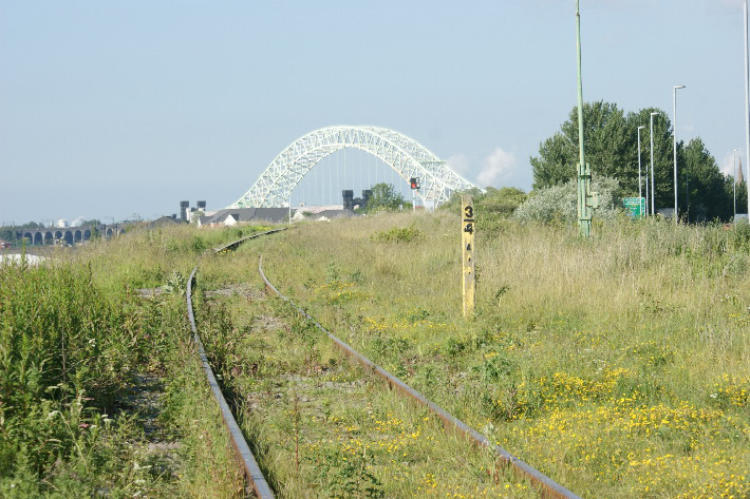
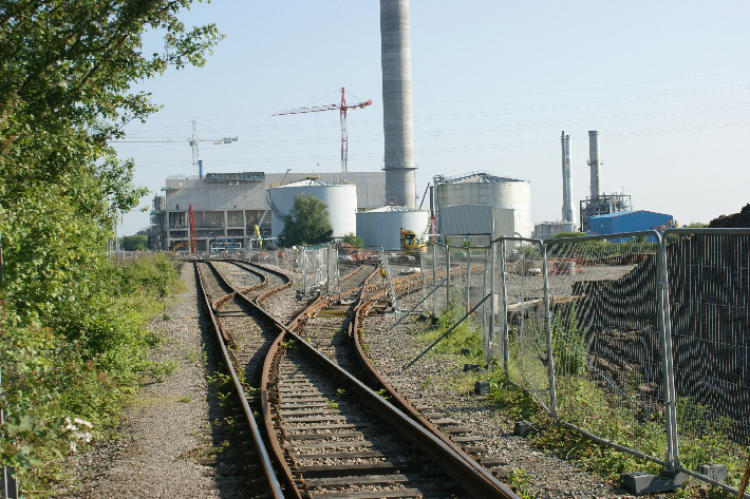
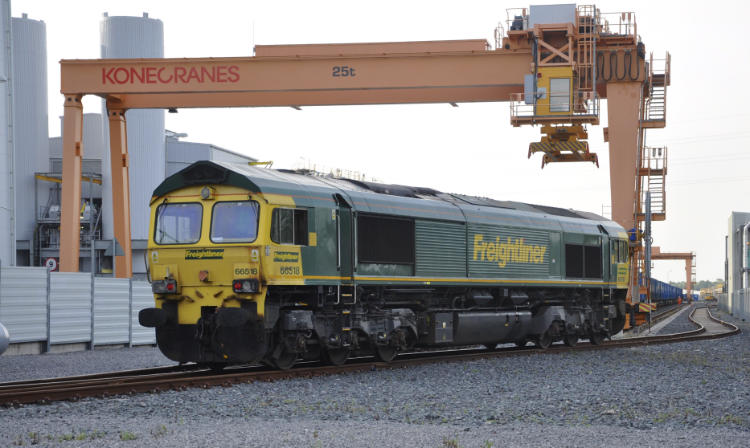
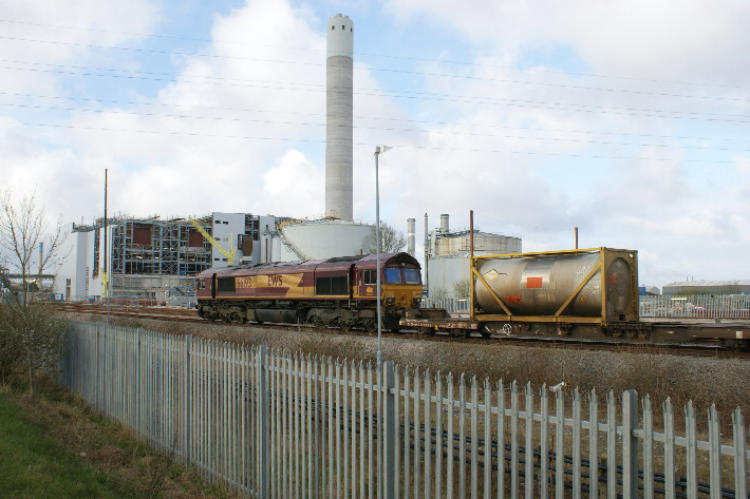
The sidings have also been visited by various railtours over the past few years, and with the new facilities there will be more visits to come.
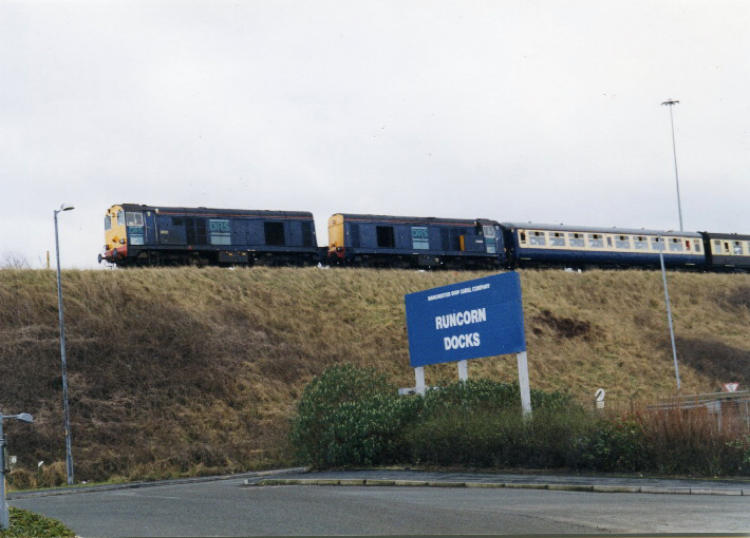

With the development of the power station and investment in loading facilities by Ineos Chlor the future of the Folly Lane branch is at last looking bright. The short branch has gone from a run down stretch of railway to a working branch once more. It is anticipated that there will be three trains of household refuse to the power station and with the caustic soda and tanktainers the branch will be seeing more trains than it has seen for many years. At the start of May 2013 Freightliner undertook gauging tests on the unloading facility at the new power station. Whilst their loco was on site the DBS Caustic Soda train arrived meaning two trains on the branch something that happened decades ago. Since the power station came fully on line, in late 2013, there are a number of four inbound and outbound paths are in the system for trains serving the power station. In reality there are usually three workings in and out during a 24 hour period. In 2017, DB Schenker were operating two trips per week from Arpley sidings with the Caustic Soda Tanks / Containers but they lost the contract to Freightliner who now operate the train to and from Crewe Basford Hall, once / twice per work.
